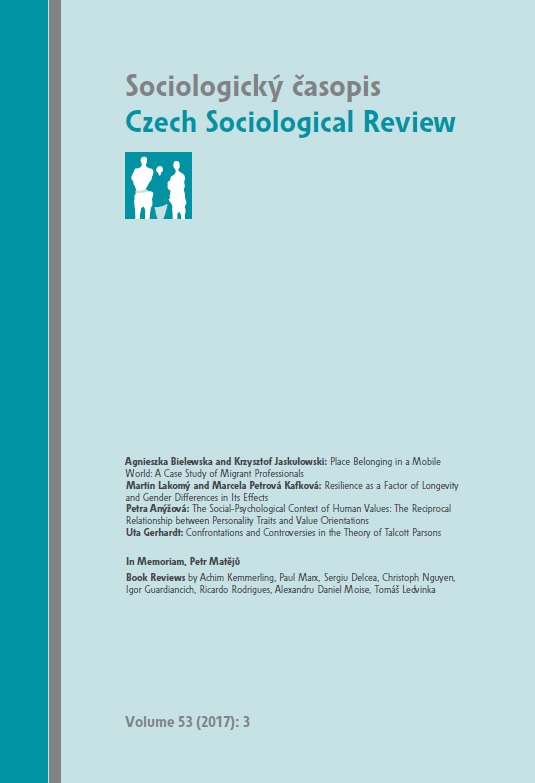
We kindly inform you that, as long as the subject affiliation of our 300.000+ articles is in progress, you might get unsufficient or no results on your third level or second level search. In this case, please broaden your search criteria.

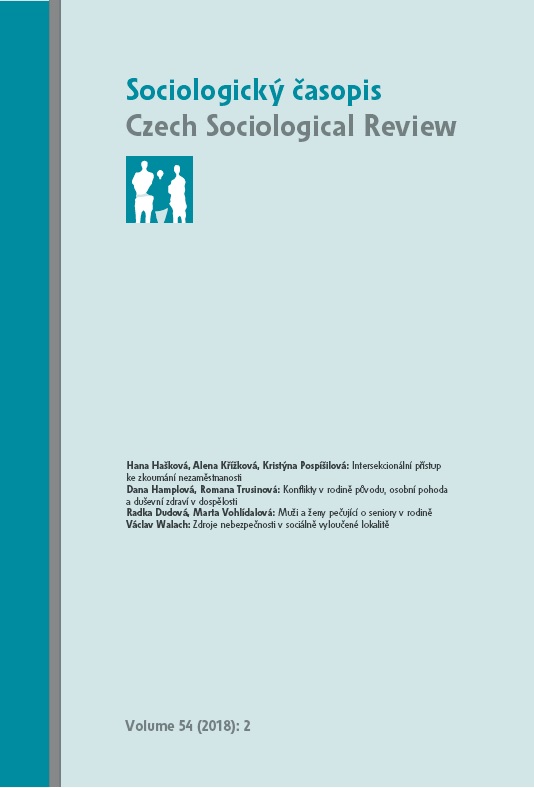
The article explores the relationship between conflict in the family of origin and an individual’s wellbeing in adulthood. It examines to what extent the negative effects of a childhood spent in a conflict-ridden family can be explained by economic deprivation in childhood, a disrupted life course, and a person’s sociodemographic situation in adulthood. Empirical analyses are conducted on data from the 7th wave of the ESS from 2014 and three indicators of personal wellbeing are used: a depression scale, self-reported happiness, and life satisfaction. The analyses show that spending childhood in a conflict-ridden family affects mainly the emotional side of personal wellbeing (happiness, depressive symptoms). The relationship between the cognitive side of personal wellbeing (satisfaction with life) and a high-conflict environment in childhood can be explained by sociodemographic factors.
More...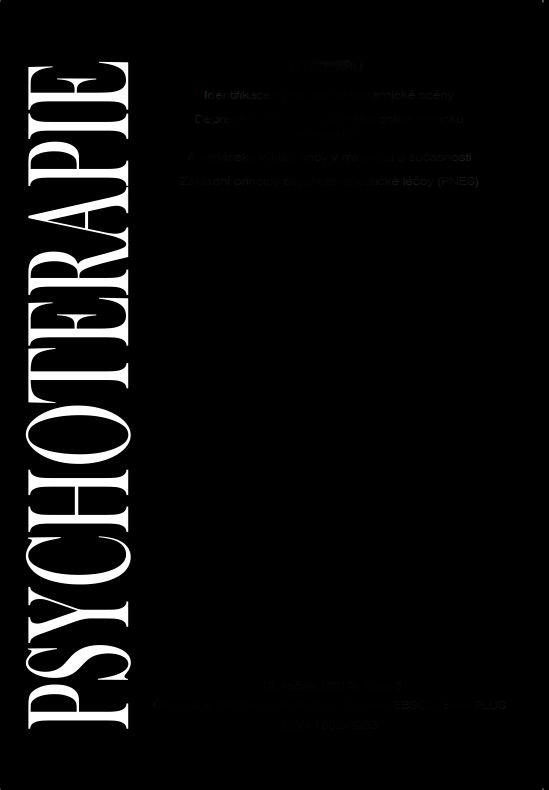
Therapeutic Foster Care (TFC) is a clinical setting appropriate for children whose parents suffer from serious mental disorders that impede their everyday parenting abilities. In this setting, the child grows, without any breaking of the bonds with his parents, within a foster family supported by a team of professionals. The child’s biological family is characterised by psychopathological problems that arise in both the child and his parents, and in their relationship. A scrupulous study of the natural history of foster placements shows that similar manifestations tend to occur in the relations between the child and his foster family, between the foster family and the professionals, and even between the professionals. Attachment theory, among others theories, provides useful tools for a clinical understanding of the aetiology of these manifestations, and to choose a therapeutic approach fit onto these complex situations in a field of interventions pertaining to both child psychiatry and child welfare. In this paper, we briefly describe what is TFC, emphasizing the clinical specificity of this practice and the theoretical concepts that support it. Afterwards, we present the basic elements of attachment theory relevant to TFC and some practical applications of attachment theory in TFC therapeutic processes, with examples drawn from significant phases of the TFC progress, describing its advantages for the child, his parents, his foster family, and eventually for all the protagonists of the situation. In conclusion, we stress the fact that the standpoint grounded in these theoretical bases provides a fruitful understanding of all the situations where a child needs a foster care, be it a therapeutic one (presence of heavy psychopathological disturbances in the family) or of another type (low level of -or non identified- psychopathological disturbances in the family).
More...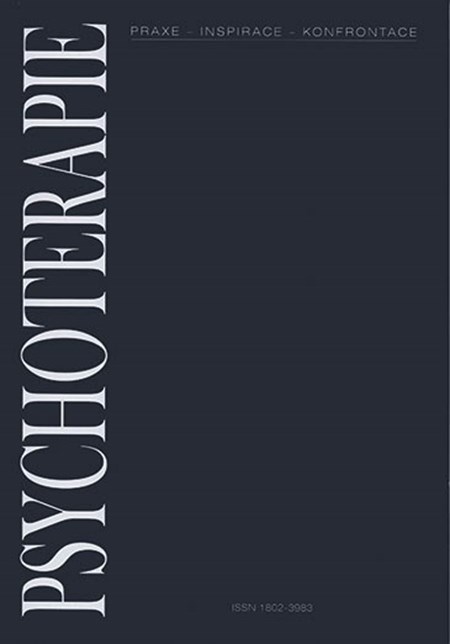
S perspektivou pouhého týdne intenzivního setkávání s klienty jsme se byli nuceni omezit na víceméně krizové intervence. I tak je možno konstatovat, že v mnohých případech bylo dosaženo užitečných výsledků. Mnozí účastníci pochopili, že starost o sebe a svou vlastní emoční rovnováhu je dobrou pomůckou k tomu, aby oni sami o to účinněji pomáhali svým klientům.
More...
Background: The type of attachment is determined by the quality of care that is provided to the child by the primary caregiver in the early childhood, by his or her genetic predisposition and other experience with relationships with close people. People tend to repeat the pattern of relationship based on their early experience later in their adult lives. Psychotherapeutic situation resembles the situation of fundamental relationship between the caregiver and the child. The therapeutic relationship can work for clients like the attachment bond. Objectives: The aim of the exploratory research was to analyze the behaviour of clients in psychotherapy sessions with relation to their attachment types. Design: quantitative – qualitative analysis of clients’ behaviour in psychotherapy sessions. Data Sources: ECR-R questionnaire and semi-structured interview. Sample: 61 people in psychotherapeutic treatment, 46 % women and 54 % men. Results: Clients with the dismissive avoidant attachment were more often late for the sessions and on the contrary, the clients with secure attachment were most timely of all. Issues concerning their parents and siblings were most often discussed by clients with secure attachment and least by clients with fearful-avoidant attachment. Clients with anxious-preoccupied attachment less often experienced humour and positive emotions within sessions, positive emotions were most often experienced by people with fearful-avoidant attachment and least by anxious-preoccupied attachment clients. Anger was most common among clients with dismissive avoidant attachment. The most autonomous within sessions were clients with anxious-avoidant attachment, most engaged in treatment were clients with fearful-avoidant attachment. Descriptive talk occurred least frequently in sessions with clients with anxious-preoccupied attachment. Conclusion: There are some links between attachment and the client’s behaviour in psychotherapy sessions, especially in the question of behaviour and emotions experienced in the sessions.
More...
Author of the text worked in several educational projects for high school teachers in the role of supervisor. The article summarizes his three-year experience with group supervision. Represents a form of implemented supervisions, provides an overview of supervisory needs of teachers, dealing with supervisory relations, processes and rules. He mentions usable principles and touches some specifics of using supervision in secondary education.
More...
The review of: G. Nardone, P. Watzlawick (2012). Umìní zmìny – krátkodobá terapie osobních a mezilidských problémù
More...
The review of: Slavoj Titl (2014). Psychoanalytická párová terapie. Praha, Portál.
More...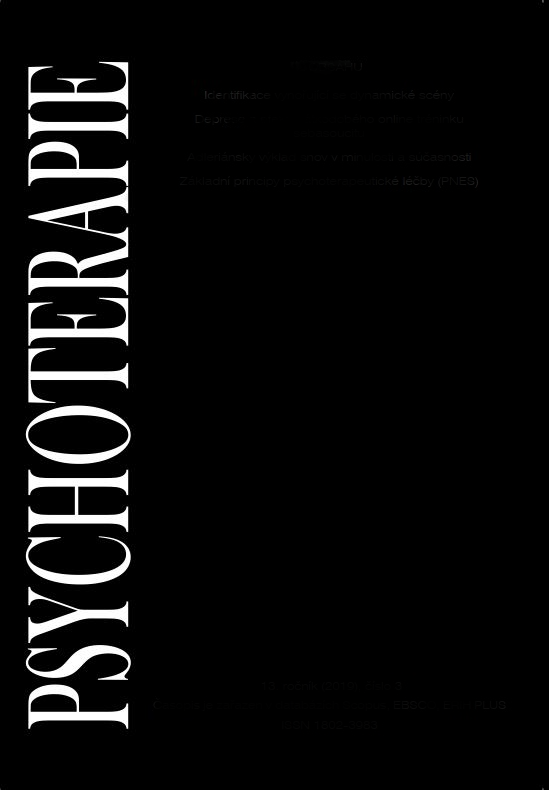
The greatest philosophers from antiquity to present were focused on the topic of humor. There are so many partial psychological theories of humor, that they were splited by Raskin and Attardo to the 3 groups – metatheories: 1. psychoanalytical, 2. cognitive- perceptional, 3. social-behavioral. The authors report possibilities how to use humor – its comprehension and emotional experiencing – in the differential diagnostics of psychiatric disorders. The Test of Jokes was used by groups of patients with schizophrenia, affective disorders, dependences and by healthy participants as well. Humor as a therapeutic tool is used in different psychotherapeutic approaches. Common effective therapeutic factors of humor are: influence on “atmosphere” of therapeutic relationship, support of cognitive factors (insight, reframing, restructuralization), facilitation of abreaction of tension and anxiety, improvement of social skills (assertiveness, social attractiveness) of the client. Humor is also a tool for saving a mental health and wellbeing of the therapist. The basic principles of the use of humorous stimulus (e.g.verbal jokes) are timing, adequacy to situation a perceptiveness of the client. The limits of use of humor in the psychotherapy are on the both sides – by client (cognitive and affective disorders), on the side of therapist his cognitive style, therapeutic metaskills and personal sense of humor.
More...
Attachment theory is one of the models that can explain why some psychotherapists are successful in working with certain „types“ of clients and why some clients benefit from psychotherapy more. Due to its characteristics there is often the activation of the client´s and therapist´s attachment in the psychotherapeutic process, which in turn affects its course. Changing client´s attachment can be one of the targets of the psychotherapeutic process and some research shows that effective psychotherapy is currently associated with the change of client´s attachment towards greater security. Results regarding the influence of therapist attachment on the therapeutic alliance are ambiguous. There is greater proportion of secure attachment among therapist in comparison to the general population. The results of studies examining the influence of therapist´s attachment on psychotherapeutic process conclude that certain attachment type does not automatically guarantee a good therapeutic alliance, but has a partial influence on the quality of therapeutic interventions. As an important factor was the interaction between the client´s and the therapist´s attachment. At the beginning of the psychotherapeutic process was beneficial when therapist and client has the same type of unsecure attachment, and vice versa for later stage of the psychotherapeutic process is proving advantageous if the client and therapist have a different type of attachment.
More...
Based on a detailed case of the infant-parent psychotherapy of a four-year-old girl and her mother, the author presents some of the psychoanalytical concepts crucial for the specific psychotherapeutic method of work with infants and pre-school children.
More...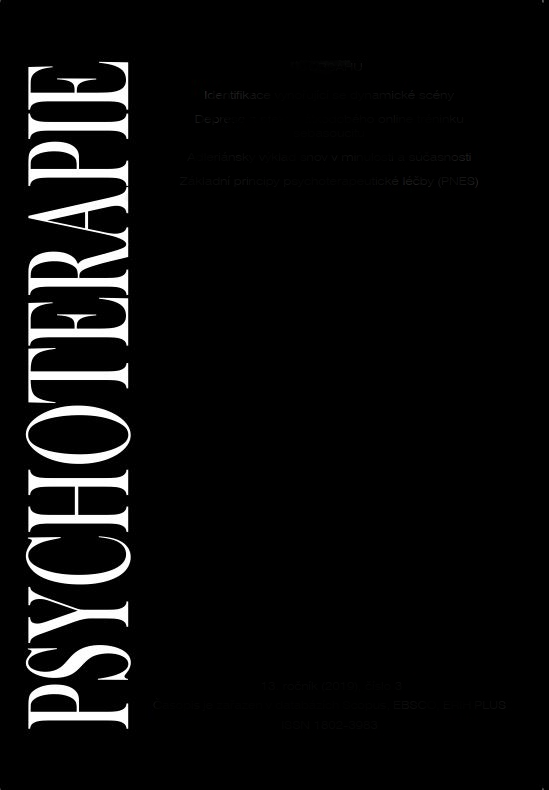
The paper is aimed at presenting the relational psychoanalysis which developed under the influence of feminism, gay and lesbian rights movements, or postmodern critique of psychoanalytic discourse in the U.S.A. in early 1980s. The author deals with the main features of this approach, including dialectical way of thinking, exploration of meaning in the context of the therapeutic situation, and emphasis on the openness, empathy, and mutuality between patient and analyst. The key concepts of the relational psychoanalysis like transference and countertransference, self-disclosure of the analyst, intersubjectivity, analytic third, dissociation, and enactment are described in detail.
More...
The aim of this article is to present a topic that is quite neglected in Czech professional literature. We deal with employing forgiveness in psychotherapy. First, we focus on specific theoretical concepts of forgiveness, its structure, mediators – that is the constituents that can facilitate forgiveness, and barriers that can, on the contrary, stand in its way. Further, we introduce different approaches to forgiveness that can be generally divided into three groups – entirely positive attitude, purely aversive attitude, and an attitude which stands in the middle of the aforesaid poles and depends on certain conditions. The core of this article is a presentation of different possibilities that show how forgiveness can be employed in psychotherapeutic practice, and a presentation of specific models that show us how to work with it. These are the results of many researches and experience of many foreign psychotherapists. The main chapter is divided according to specific approaches to the comprehension of forgiveness, different ways of using it, and according to various clients that are involved (e.g. family, an individual, a victim together with the offender etc.).
More...
The review of: Marek Kolařík, 2013, 124 stran. Praha: Grada.
More...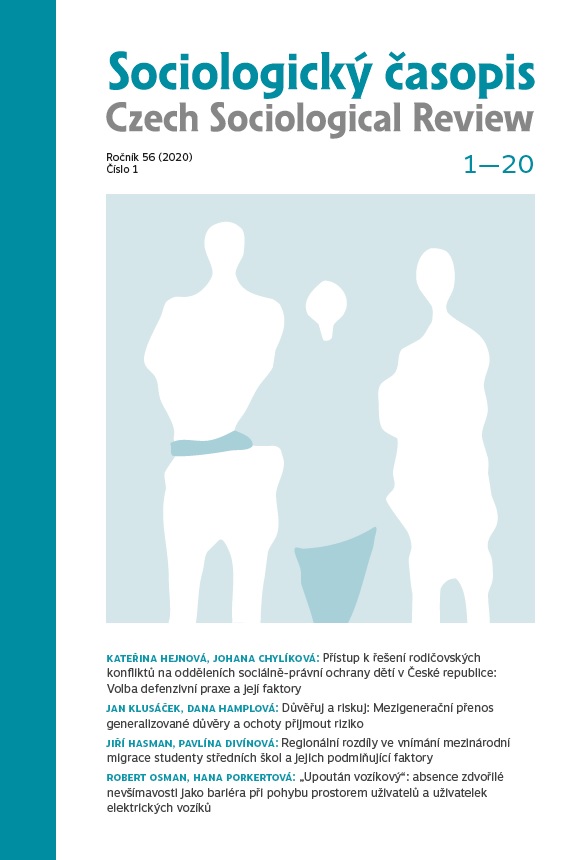
The article examines the intergenerational transmission of generalised trust and willingness to take risks among Czechs. Data from the Czech Household Panel Survey are used to compare levels of generalised trust and willingness to take risks among parents and their offspring between the ages of 15 and 26. The analyses confirm a similarity of attitudes between parents and children, but indicate differences according to the parent’s sex. While a statistically significant similarity is observed between mothers and their children, fathers form a more heterogeneous group. The analyses also find a higher level of trust among children from Catholic families, but no connection is observed between generalised trust and a parent’s level of education, sex, or the child’s age. Conversely, the level of willingness to take risks is much greater among boys and older children but shows no link to what religion parents belong to.
More...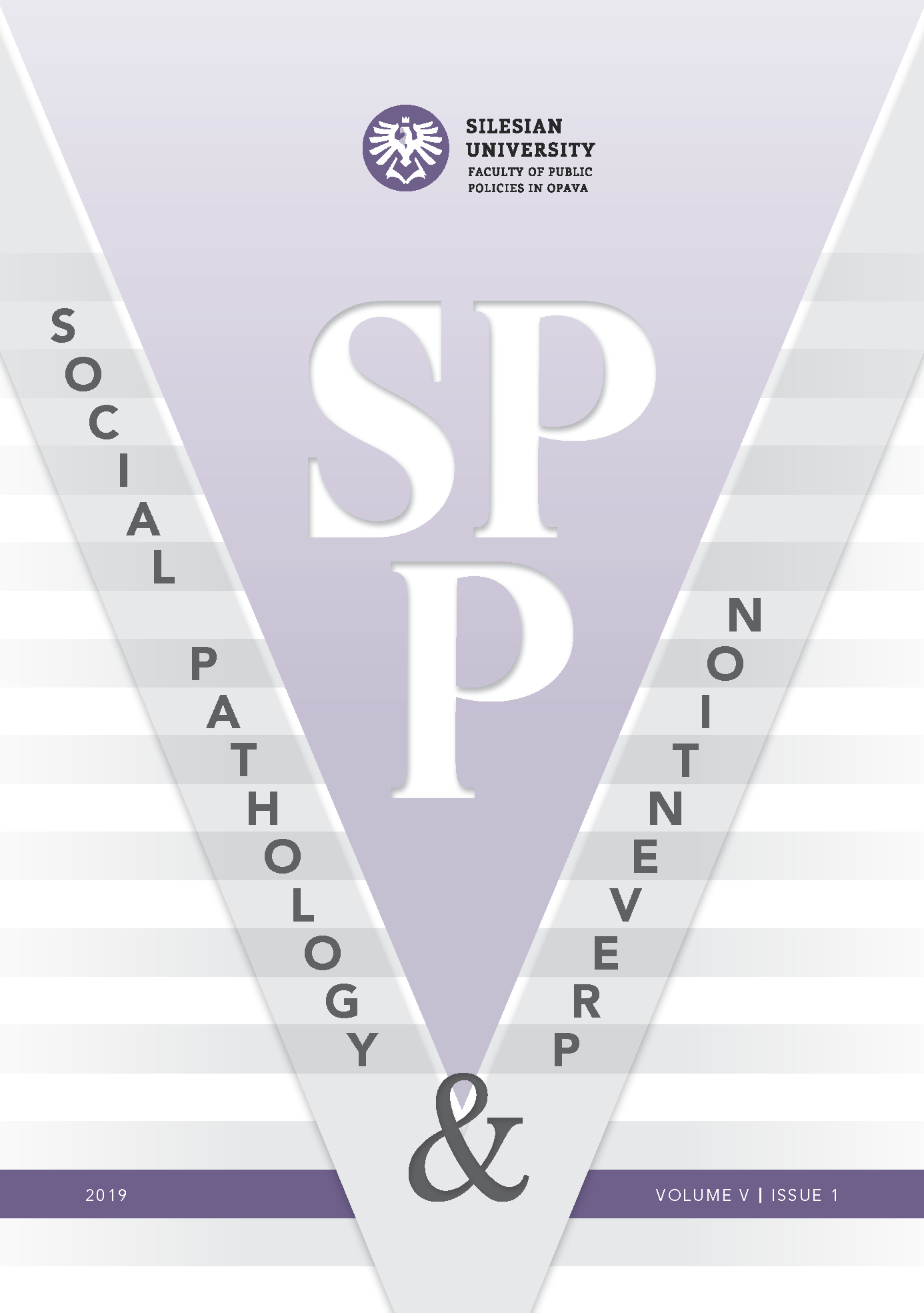
The submitted contribution responds to the current global migration and integration issues. It presents a comparison of the knowledge in areas of social inclusion, social exclusion and social cohesion and their interrelations. It points to basic theoretical starting points and concepts solving social exclusion, to the dimensions of social inclusion from the perspective of including marginal groups in the majority society, and to the importance of social capital. It provides a basic analytical and comparative orientation in the field of social inclusion from the perspective of immigration and those socially excluded or at risk of social exclusion. It provides basic information on basic initiatives in the field of social inclusion within the EU, presents a practical project aimed at solving the social integration of people excluded or at risk of social exclusion at the regional level as innovative solutions and aspect of originality. Practical applications in different countries are related to public and social politics. Comparative analysis and research reports have provided an adequate level of knowledge about the problem.
More...
The consequences of both workplace ostracism and workplace loneliness may include negative impacts on employee performance, yet few studies have focused on the interactions between these three constructs. In this context, both current and future studies may make prospective contributions. The goals of this paper are to investigate the associations between these variables and to determine whether workplace loneliness has any moderating effect on the possible association between workplace ostracism and job performance. A quantitative study was designed, and 349 employees in different sectors were included in the research. Findings indicated that workplace ostracism was positively associated with workplace loneliness, while it was negatively associated with job performance. A negative association between workplace loneliness and job performance was also estimated. Neither workplace loneliness as a whole nor social companionship had any moderating effects on the workplace ostracism–job performance association. On the other hand, emotional deprivation was found to have a moderating effect on this relationship. The findings prove that in combination, emotional loneliness and ostracism cause greater damage to employee psychology and, therefore, more greatly reduce job performance.Implications for the Central European audience: The study demonstrates that among the aspects of workplace loneliness, the emotional component is more critical to employee psychology and, therefore, job performance. Determining the factors that cause emotional loneliness in the workplace and taking precautions against them seem to be significant to the achievement of organisational goals.
More...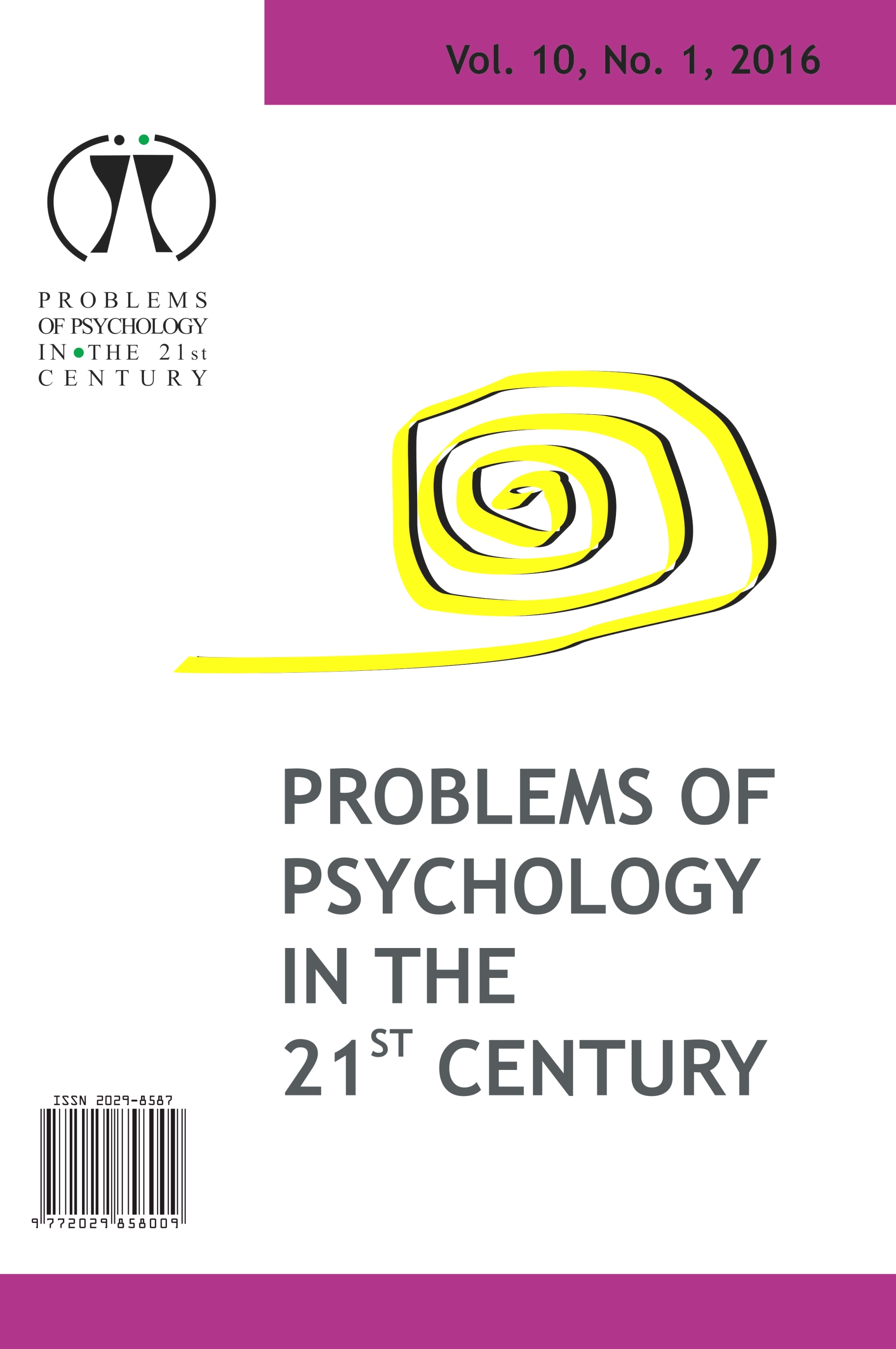
Perceived occupational attractiveness could be due to many factors and relationships in the workplace are among them. The questionnaire “Attractiveness of the profession” created by Ivanov (1999) was used to study how relationships in the workplace were related to perceptions of occupational attractiveness among students, teachers and rangers-sportsmen participating in special missions abroad. In 2012 and 2013, 46 secondary school teachers, 40 students in pedagogical specialties, and 27 sportsmen-rangers participating in special missions abroad were studied in Bulgaria. The results indicated that the students and the rangers were more satisfied with their work than the teachers were. The interpersonal relationships influenced mainly the students’ and rangers’ perceptions of occupational attractiveness. The rangers were more influenced by the relationships with the colleagues. The psycho-climate in the workplace was considered as more important by the rangers. The students were more influenced by the interpersonal communication at the workplace and their heads’ expertise. Some moderators of interpersonal relationships in the workplace were found – such as the tasks in the work, the prestige of occupation, the interaction between occupation and rewards, and the psycho-climate in the workplace.
More...
In this research the theoretical principles of psychological analysis of group project activity of students in the process of learning foreign language are defined on the basis of subject-activity, socio-psychological and cognitive paradigms. The approaches of different authors to the understanding of the concept of project and in particular group project activity are considered. The difficulties of the theoretical analysis of this specific notion are indicated due to the considerable variety of subjects, types and forms of the pedagogical activity, academic disciplines regarding which the researches are being carried out. Not disclosed aspects of organizing the group project activity of students are being determined, among them is a project group as an autonomous subject of joint activity for the realization students’ project activity while learning a foreign language; forming psychological readiness of teacher and student to use project method; the role of metacognitive aspect in the surrounding, where the project activity is being carried out; group functioning through the project work as a subject of group examination. It has been indicated that the analysis of project activity as an innovative technology must include its assessment as a condition of student’s developing as a subject of learning activity, his personal, socio-psychological, intellectual and professional self-perfection. Three levels of subjectivity in group project activity are being distinguished: teacher; each particular student; and student project group. Interaction between teacher and student is based on subject-subject relations. An organization of a project activity while learning a foreign language is considered as the one in which the student is moving in order to get the manager position and to master the basis of expert knowledge. Hereby, the main stress is on the group role as a subject of group examination, and also on metacognitive character of the surrounding. On the basis of conducted theoretical analysis, the new understanding of the notion of a group project activity is proposed. It is claimed, that the effectiveness of a group project activity is determined by the level of psychological readiness of students and teachers to implement it.
More...
This work, inspired by the symbolic “centenary” of Polish psychology has been dedicated to the emergence and development of applied psychology. The main protagonist of applied psychology, and clinical psychology in particular, has been, in the author’s opinion, Lightner Witmer (1867–1956), an American psychologist promoting the clinical method of getting to know the patient through a direct contact of the psychologist with the maladjusted, including contact in their everyday environment. Witmer’s message, supported by the new ideas of the systems theory, environmental psychology and the spreading concepts of social psychology, can be all found in what is currently expected from psychologists. Applied psychology is not only a “bridge” between the theory of psychology and professional practice, but most of all, it remains a science directed towards practice, open to the contemporary challenges; a science that accepts the necessity to adjust the ethos of the profession and the new tasks of environmental work for the improvement of health and the quality of life.
More...